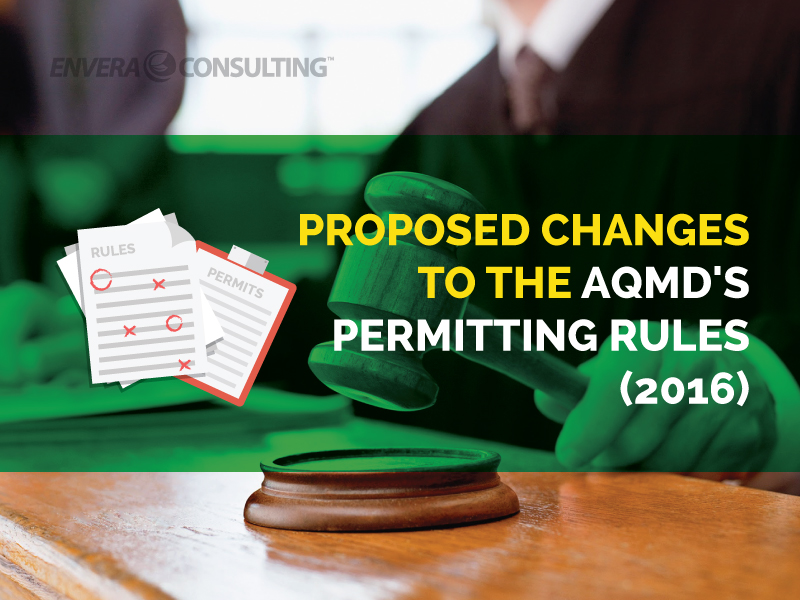
Determining if a piece of equipment needs an air permit is complicated. Typically, the process requires you to look at the South Coast Air Quality Management District‘s “trio of permit-applicability” rules: Rules 201, 219, and 222.
Of these three, Rule 219 is the most important, since it is best to approach this type of analysis with the assumption that all pieces of equipment are subject to permitting unless an exemption is found in Rule 219, which was initially adopted in 1976 and has been amended several times, with the last amendment being in 2013.
Recently, the SCAQMD has been working to amend Rule 219 once again. In the 2016 set of revisions, the agency is considering a number of changes that include:
- Adding new classes of exemptions
- Limiting the types of equipment that are exempt
- Adding clarifying points to current exemptions
In July 2016, the SCAQMD had a workshop on the proposed amended Rule (PAR) 219 and also sought public comments on the proposal. The agency has since had a follow-up meeting last week to present the revisions to PAR 219 based on the comments received.
Some of the proposals for PAR 219 include:
- Exempting coffee roasting equipment with a capacity of 15 kilograms or less from permitting
- Exempting beer and wine manufacturing equipment where total production is less than 1,000,000 gallons per year, provided that the equipment is also exempt under Rule 219 (b)(2)
- Requiring cooling towers located at chemical plants, refineries, or other industrial facilities to register the units under Rule 222
The current version of PAR 219 will also broaden the “exemption to the exemption” section of the rule (i.e., section “S”).
Under the current proposal, PAR 219 will be amended to require a permit if a piece of exempt equipment cannot operate in compliance with all of the SCAQMD’s rules, including but not limited to Rule 402 (nuisance). For example, a normally exempt piece of equipment (e.g., coffee roaster) may be subject to permitting if the odors from the roaster pose a nuisance in the surrounding area.
In terms of next steps, for PAR 219, the SCAQMD staff has proposed to conduct site visits to look at certain equipment covered by the proposed exemptions and will request additional feedback on PAR 219. The deadline for these comments is listed as being November 30, 2016.
The SCAQMD will also be having the next working group meeting in December or January to further discuss PAR 219 with affected stakeholders.
More information about PAR 219 and be found here.